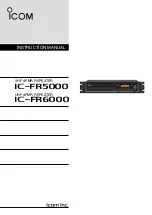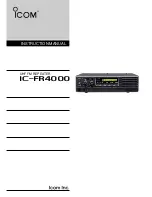
P
R
E-
INST
AL
LAT
ION
CONSIDERATIONS
13
Installation Guide
During this RF test coverage, try to test those
spots that are most likely to be used for most of
the people and those areas that may appear
particularly challenging due to concrete/steel
walls, building architecture, obstructions (like trees
or vertical fire panels in ceilings or walls) and
terrain shape. Make sure you walk around all
those places in order to test reception and
transmission signal strength.
Conduct the test transmitting preferably on those
settings that you plan to have your radios and
repeater programmed(*). If possible, repeat the
test using different frequencies and codes.
Note:
(*) Remember TX range for the repeater is
450 – 455 MHz and RX range is 465 – 470
MHz.
If the reception coverage is below expectations,
try changing the height of the antenna or the
repeater location (do one change at a time so you
can track what is really affecting the coverage)
and repeat the field test coverage.
For information on how to set up and program
multiple repeaters in the same area (for different
user groups), please refer to the "Setting Up
Multiple Repeaters In A Single Location (Multiple
User Groups)" on page 46.
Environmental Conditions at Intended
Installation Site (*)
A key factor for repeater performance is to
accurately evaluate the site environment where
the repeater is being installed. Plan the
installation, paying particular attention to
environmental conditions at the site like
temperature, humidity, dust and ventilation.
The repeater may be installed in any location
suitable for electronic communications equipment
provided that the environmental conditions do not
exceed the equipment specifications for
temperature, humidity, and air quality according to
MIL 810 and IP55 ruggedness specifications (For
specification details, please refer to "Appendix A:
Repeater Specifications" on page 63).
2000018_B_PORS_en.book Page 13 Thursday, January 14, 2010 2:10 PM
















































